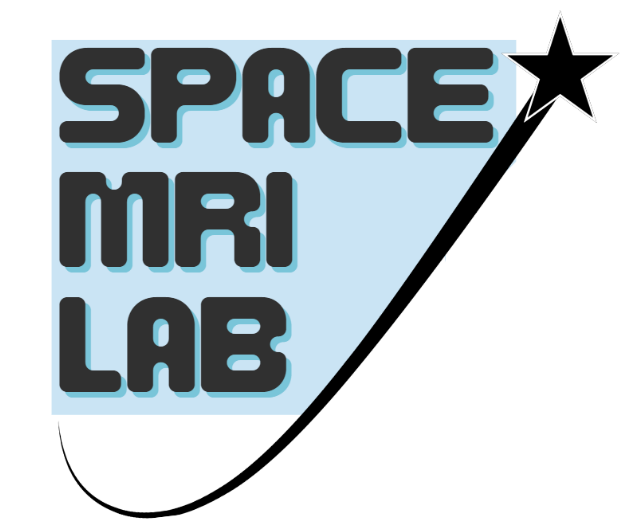
Lab Director: Gordon E. Sarty
The Space MRI Lab is affiliated with the USask quanTA Centre and the SIIT AME program.
Note to surfing students: I accept students through Biomedical Engineering or Physics and Engineering Physics when funding is available.
Gradient-Free MRI / Space MRI Concept
The Space/Gradient-Free MRI work focuses on the development and application of new developments in MRI technology that will result in an MRI that is an order of magnitude lighter and cheaper than existing MRIs. Hand held MRI and an MRI on the Moon are the ultimate long term goals. The applications for gradient-free portable MRIs in the nearer term include use in remote northern communities, and in developing countries. These low field MRIs will be used for different diagnostics than the giant high field MRIs that are now used in large urban centers. Nevertheless, populations that currently have no access to MRI (most of the world's population) will then have some access. A Gradient-Free MRI could also have applications in small X-ray clinics, nursing homes, the Emergency Room where it would be safer for children than X-ray CT, and in the Operating Room where it will be useful for minimally invasive surgery and futuristic robotic surgery. Our MRI design goals of extreme low mass, low power consumption and high reliability are largely driven by our effort to secure a CSA mission to install an MRI on the International Space Station and/or a future lunar base. Our current work to engage northern Saskatchewan communities in educational work based on building these MRIs follows the Canadian Space Agencies Health Beyond vision.
The Space MRI design concept is based on three strongly Canadian technological innovations:
- Gradient-free MRI. Spatial encoding is achieved through the manipulation of transmitted RF rather than through magnetic field gradients. This technology - called TRASE - was originally developed at Canada's NRC Institute for Biodiagnostics (IBD). Our group works closely with one of the original inventors of TRASE: Jonathan Sharp now at the University of Alberta. Traditional magnetic field gradient hardware is complex, heavy and requires large amounts of electrical power because it needs to modify a vary large magnetic field. RF, on the other hand, requires very low power and simple hardware because it takes advantage of nuclear magnetic resonance. MRI in space is now technically possible (TRL = 6) because of the low mass, low power requirements and high reliability that RF encoding offers.
- Halbach magnet geometries. Using permanent magnets instead of superconducting magnets also reduces mass and complexity. Halbach geometries also eliminate the magnetic stray field which is necessary for safe operation in space. Past proprietary geometries with uniform magnetic fields have been developed by MRI-TECH Canada in collaboration with AMag of Poland. Cuurently we use proprietary geometries from LT Imaging Inc in Toronto.
- Miniaturization of MRI RF electronics for space. Our electronics are centered around a custom software defined radio (SDR) from LT Imaging. The use of Class D RF amplifiers, also from LT Imaging, has led to a very compact electronics board footprint.
In addition to the TRASE concept for gradient-free MRI, we are also working on other approaches some of which will use highly sensitive magnetometers made from diamonds with nitrogen vacancies (NVs), one of a new generation of emerging quantum materials.
Progress
- The original ISS-MRI concept, ca. 2012, was to build an 800 kg full body size MRI:
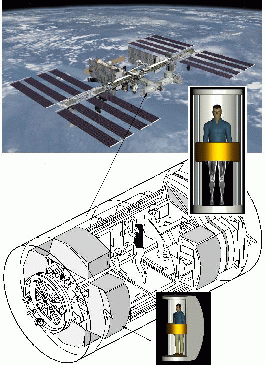
- The study phase for the ISS-MRI, was funded by the Canadian Space Agency under one of the ISS Life Science Research System contracts, from January 6, 2014 to June 4, 2014. The proposed ISS-MRI was a wrist-sized MRI, approximately 50 kg, to fly on the International Space Station (ISS) 18 months after the build phase is funded. The proposed design for the ISS-MRI looks like:
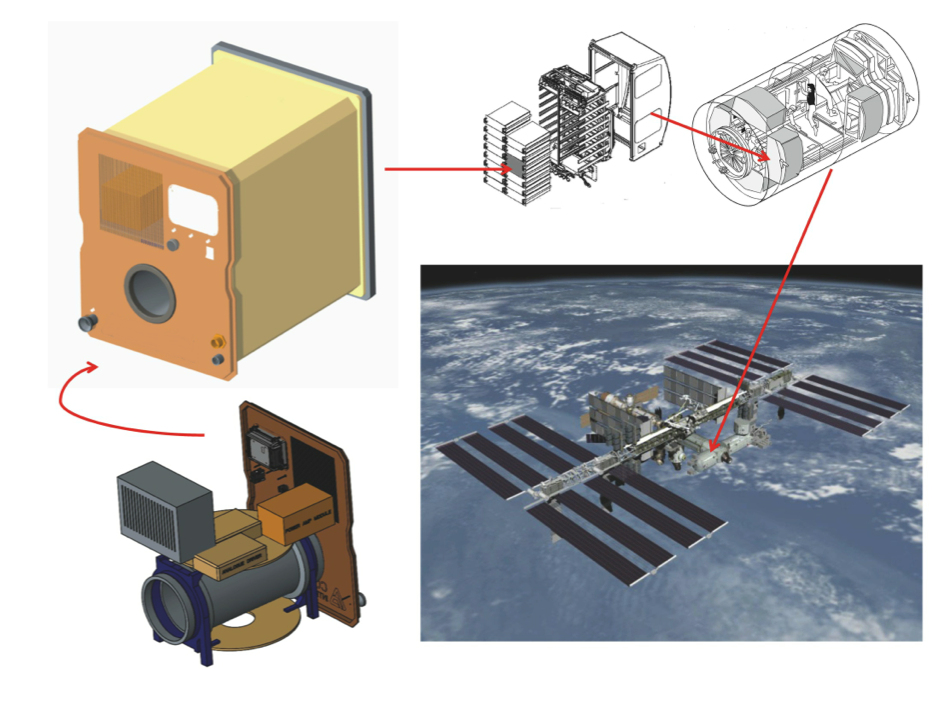
- Our first gradient-free MRI (named the "Sparrow MRI") was built in late 2014. It is also wrist-sized and it uses a rotating non-uniform magnet with spatial-encoding RF receive coils. Its magnet weighs about 2 kg. It looks like:
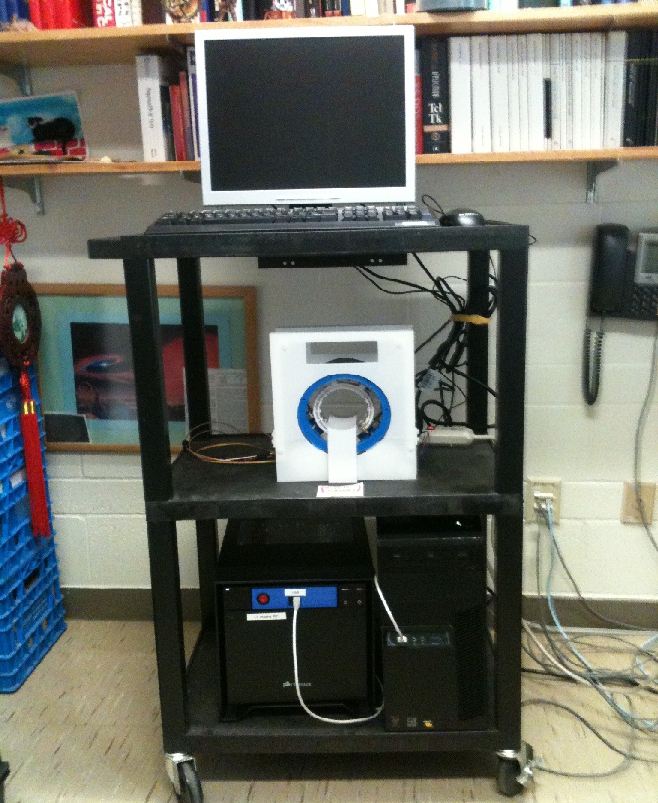
- Our second gradient-free MRI (named the "Owl MRI") was completed in late 2015. It is wrist-sized, very light weight, and has no moving parts. In early 2017, we were producing the first images with the Owl. It looks like:
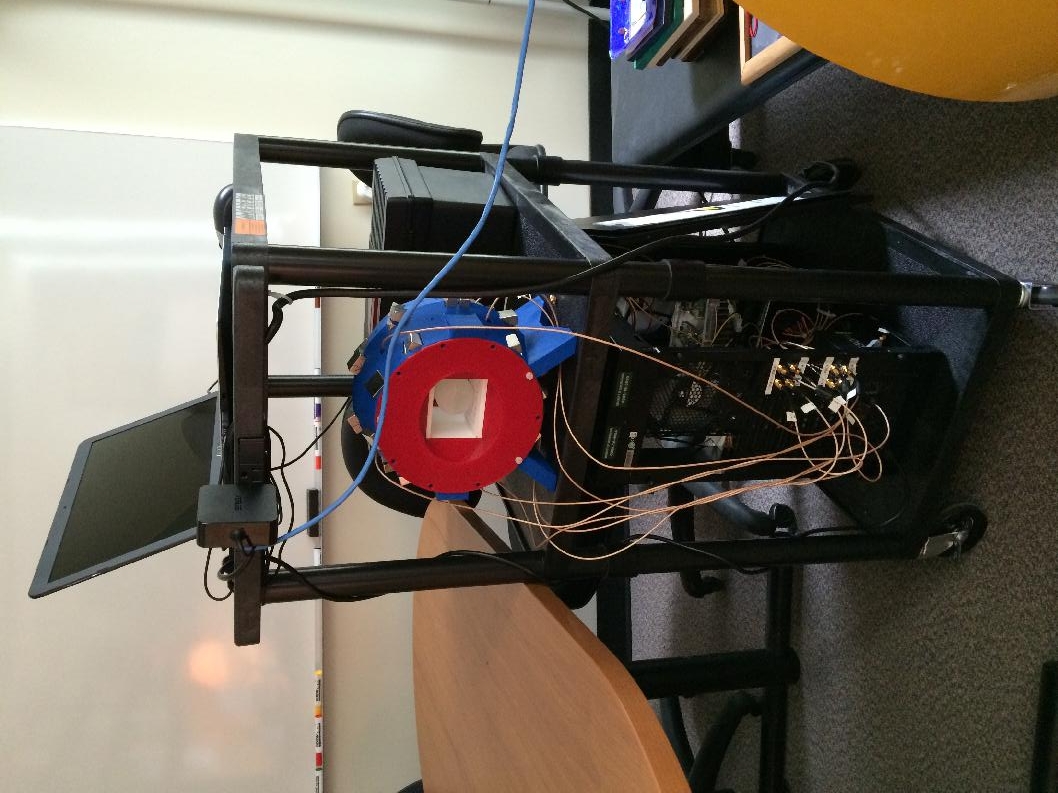
- In 2014-15 and 2015-16, senior engineering physics student design groups developed equipment to measure the magnetic fields in the MRIs. The equipment is based on a hobbyist CNC configured to move sensors around inside the magnet bore:
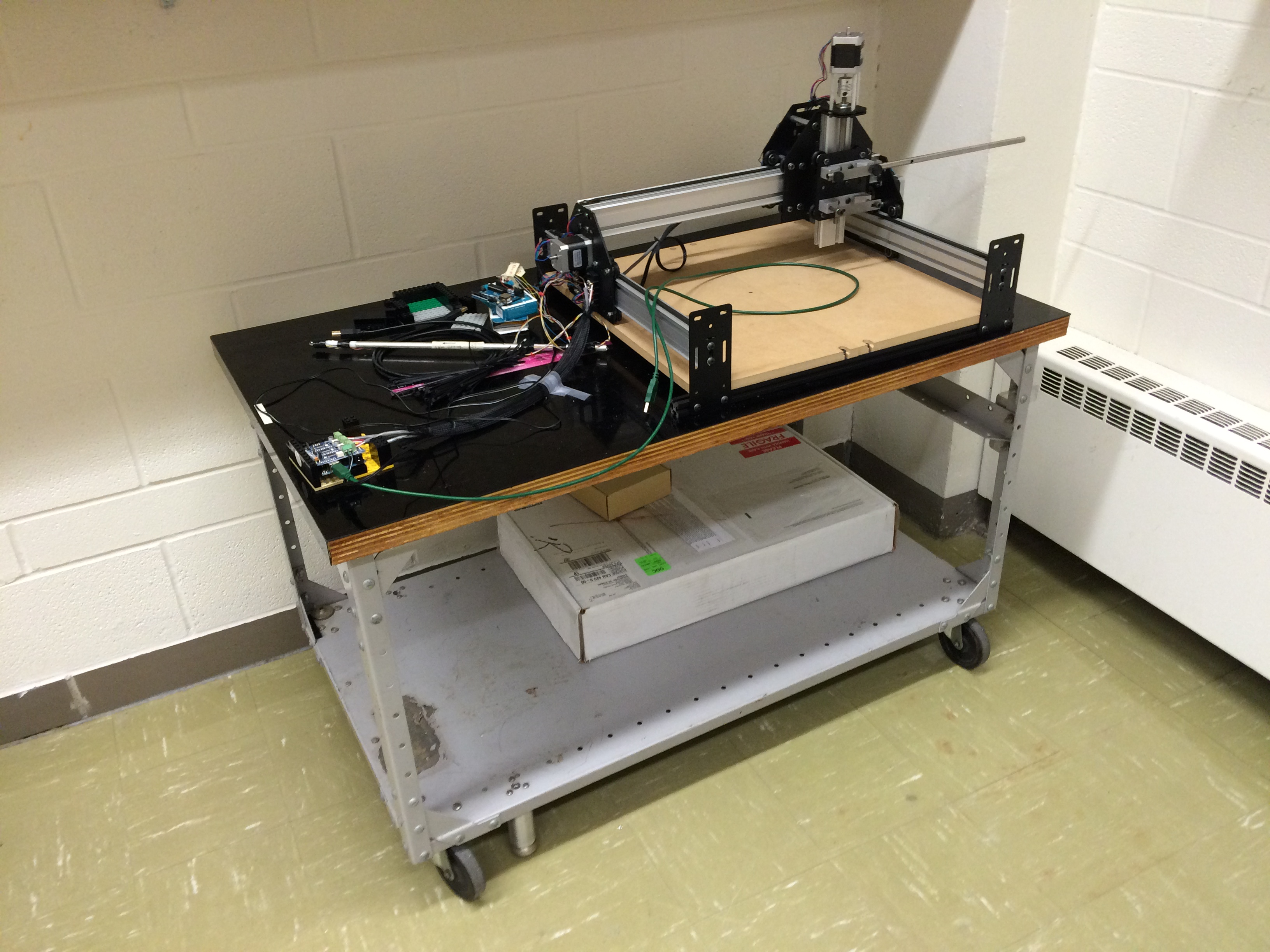
- Future gradient-free MRIs would be full body size, a mockup of which looks like:
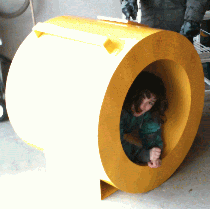
This idea is anticipated to have a mass of a few hundred kg. -
A FAST grant from the CSA was awarded to P.I. Gordon Sarty in January 2017 to fund a team of graduate students to build a ankle-size for testing on NRC's Falcon 20 jet aircraft. The MRI built for this project was called the "Merlin MRI".
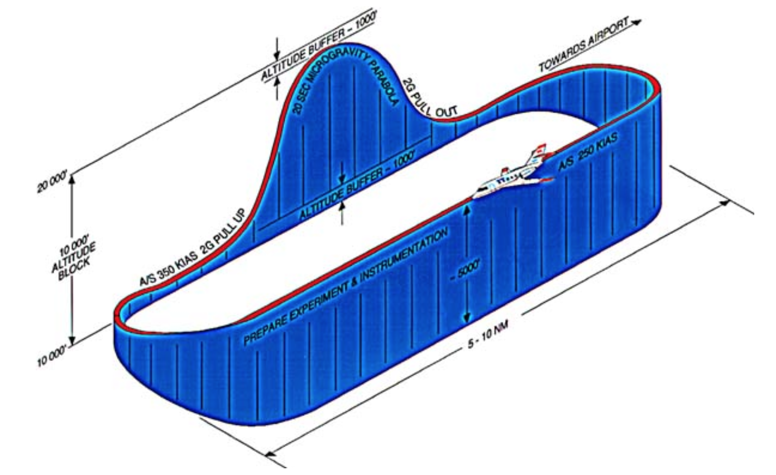
-
In the summer of 2017, the Owl SDR was upgraded. The electronics box is now not only smaller but imaging experiments that took 40 hours to complete on the first version (Owl 1.0) took five minutes on Owl 1.1. We learned much about the tough technical problems of transmit coil coupling with the Owl 1.0 and 1.1 MRIs.
- An STDP contract from the CSA in was awarded to P.I. Gordon Sarty in October 2017 to continue the design work for an ISS MRI begun in 2015. This time the CSA wants an ankle-size MRI.
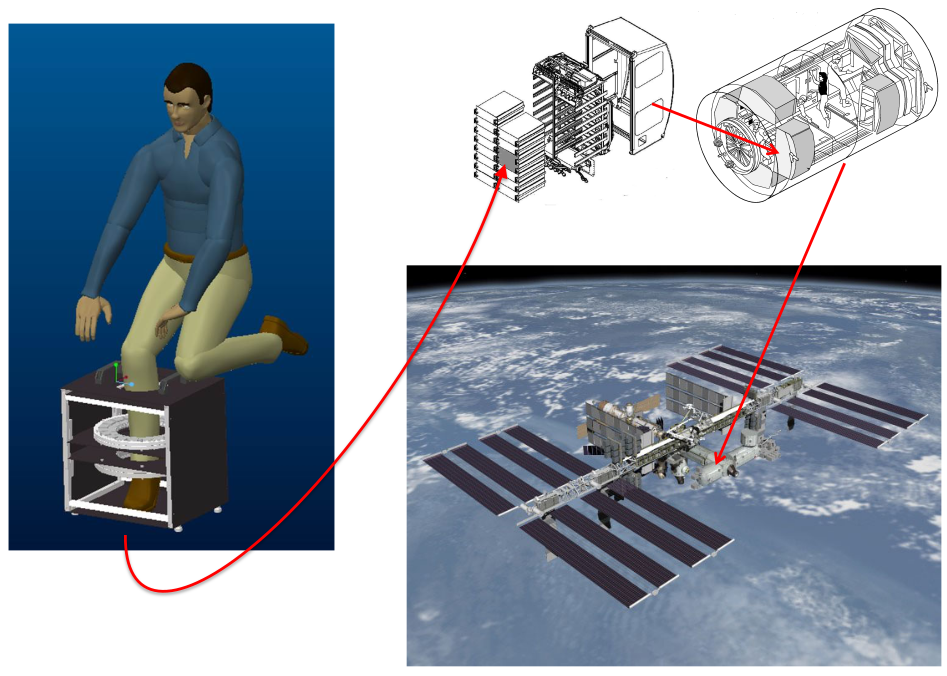
- An STDP contract was awarded to P.I Gordon Sarty in 2019 to define medical imaging requirements for future interplanetary spacecraft.
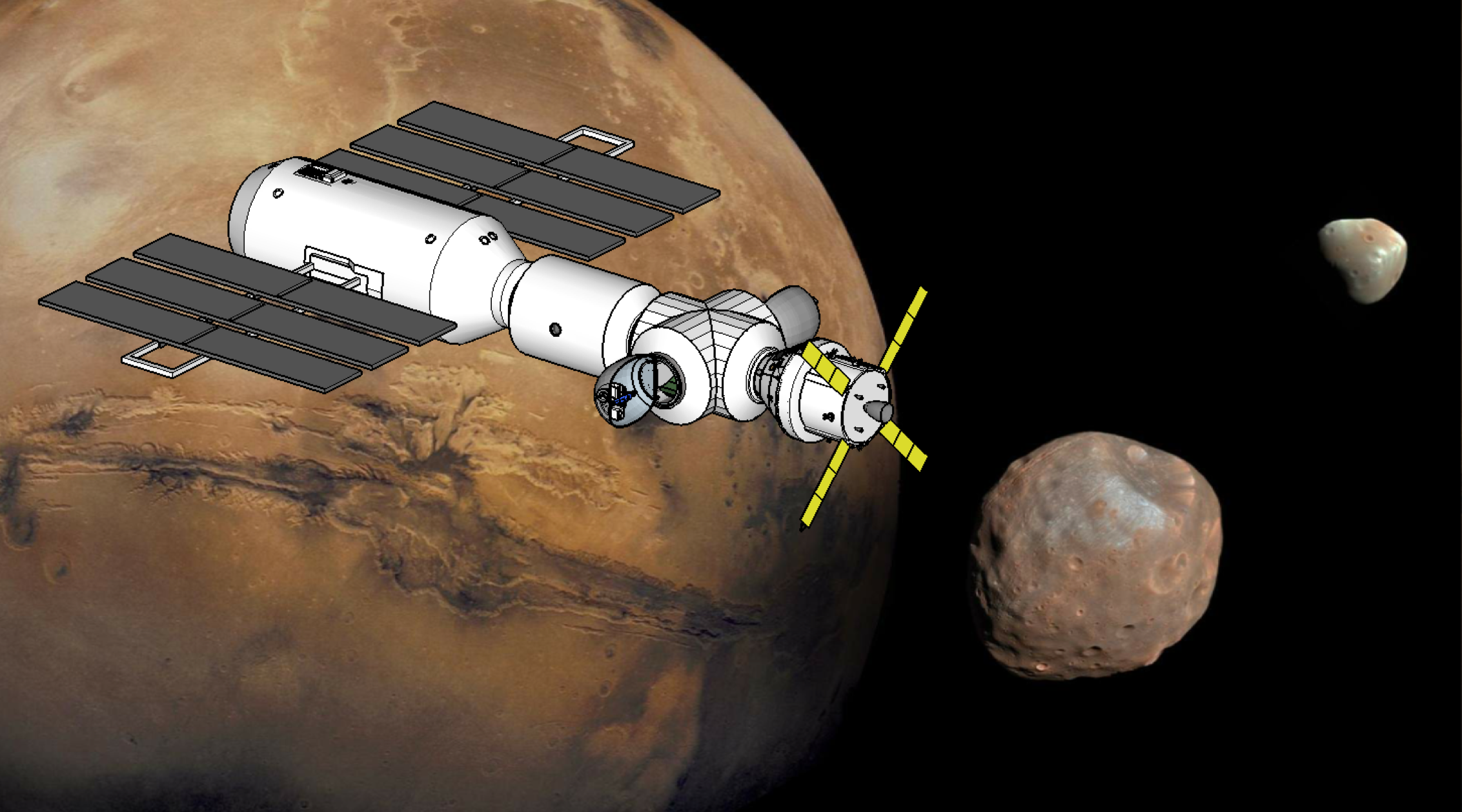
-
The Owl 1.0 MRI was completely dismantled and reassembled (Owl 2019) in 2019 by graduate students Pallavi Bohidar and Farnaz Zohourparvaz to investigate Jonathan Sharp's twisted coil technology. Images from Owl 2019 appear in Pallavi's PhD thesis.
- The Sparrow MRI has been completely dismantled in 2019 for use with diamond NV experiments by Hammed Ejalonibu. His objective is to measure the B0 and B1 fields for use in our image reconstruction algorithms.
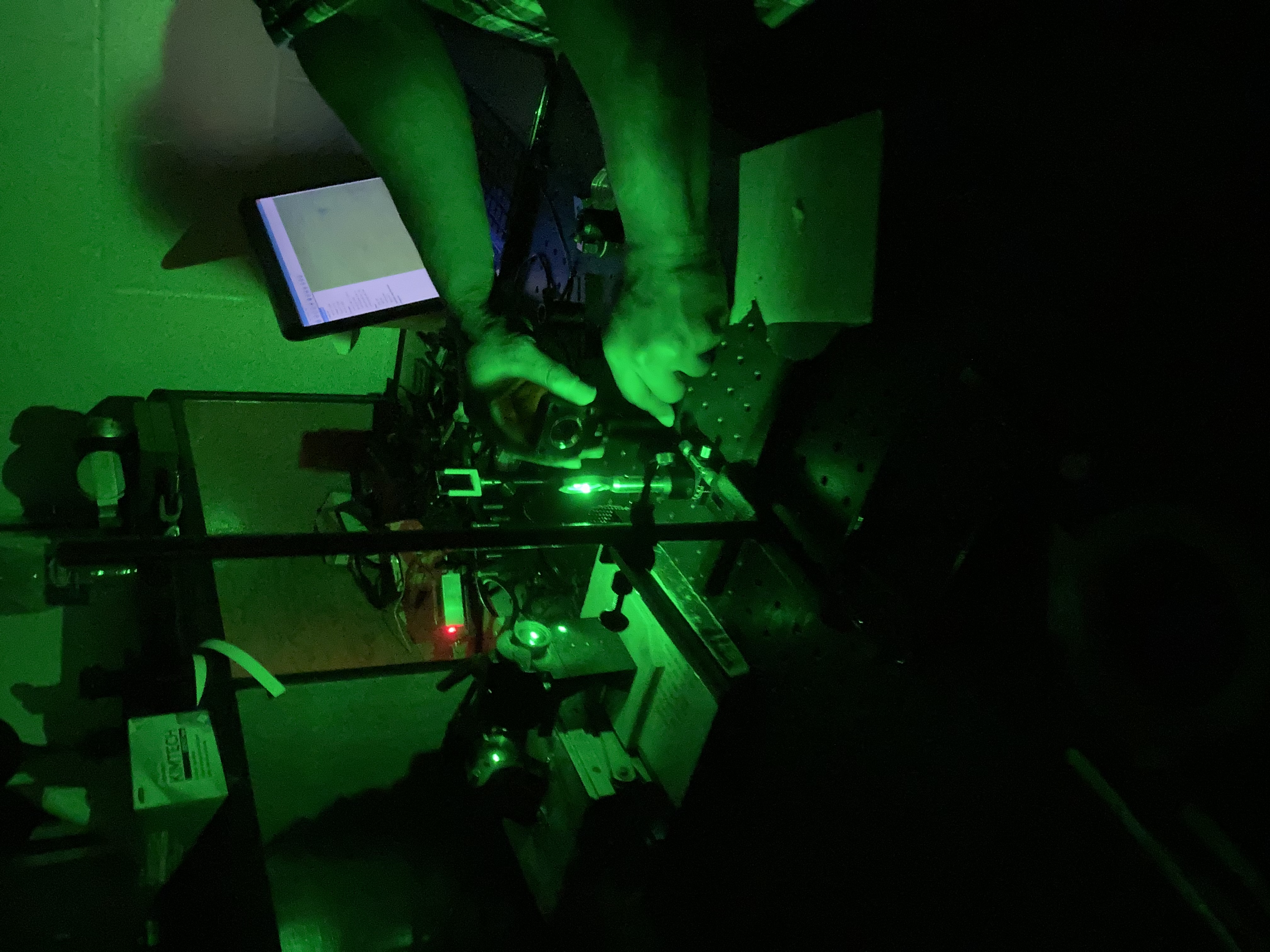
- The Merlin MRI successfully flew in zero-g on a Falcon 20 jet flight in April, 2021.
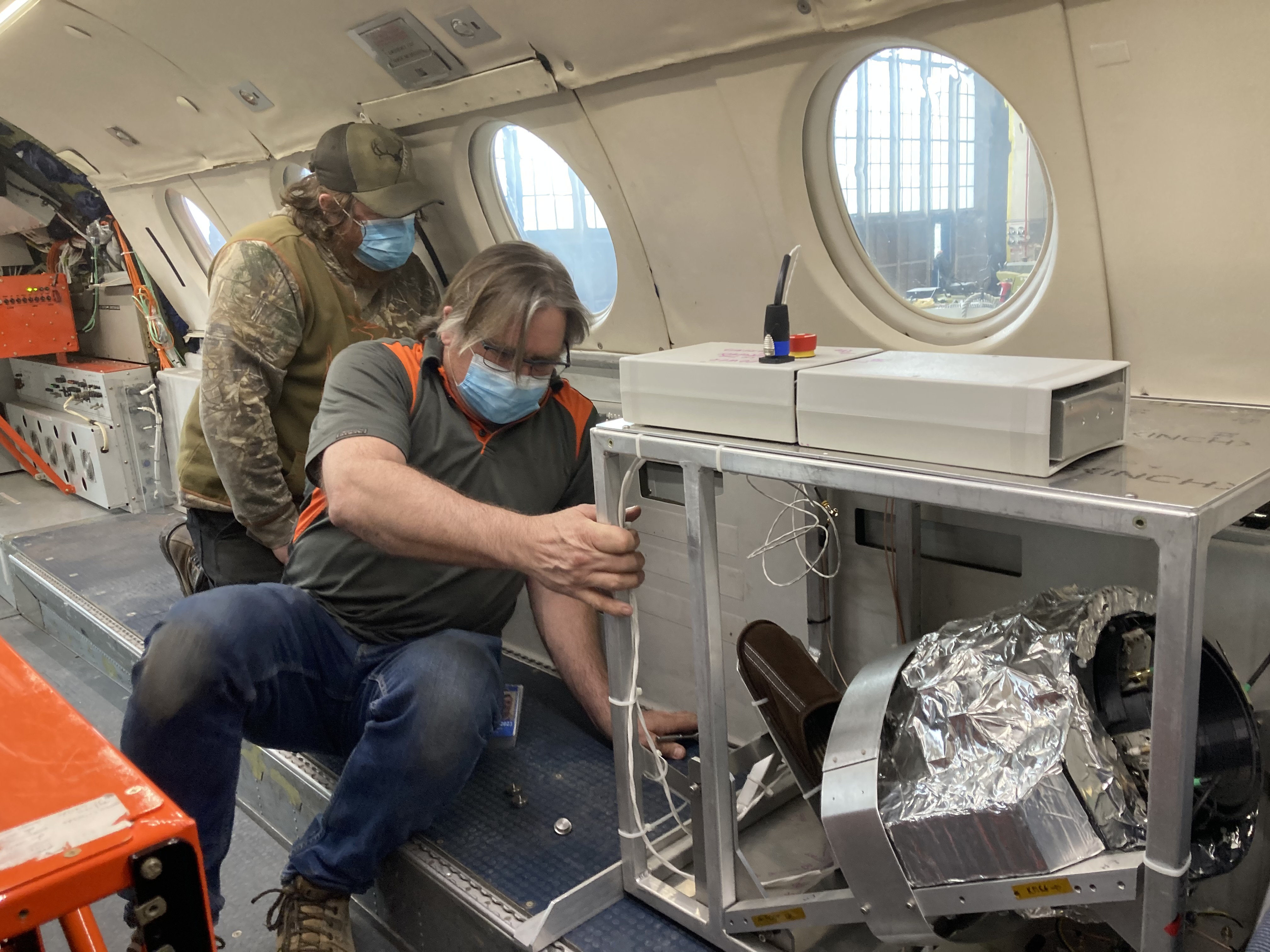
-
Pelican MRI, Inc. formed with winning Stage 1 of the CSA's Deep Space Healhcare Challenge, April, 2022.
- Owl MRI has been completely rebuilt again (Owl 2023) with a twisted solenoid/saddle coil set and class D amplifiers and the Merlin MRI SDR. User interface and pulse sequence software advanced. This MRI is a prototype for a wrist-size MRI for the lunar Gateway.
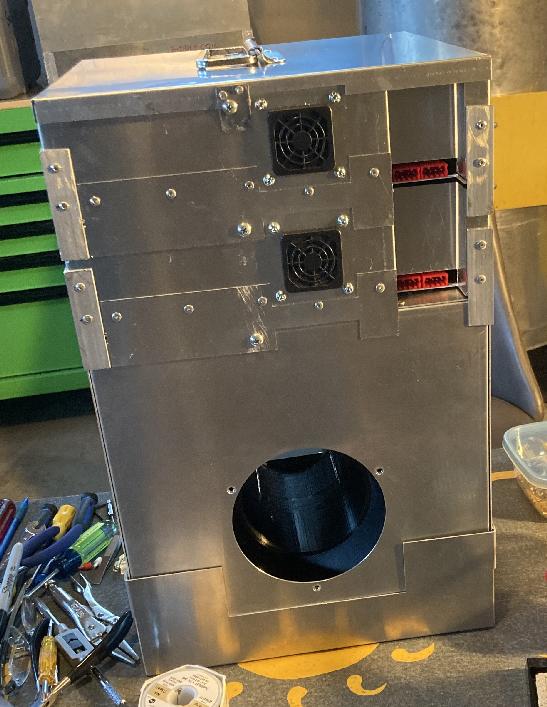
-
Pelican MRI, Inc. wins Gateway MRI Concept Study contract with the Canadian Space Agency, June, 2023
-
Following the direction of the CSA's Health Beyond Initiative, student-based projects to build gradient-free MRIs at the Saskatchewan Indian Institute of Technologies (SIIT) began in the fall of 2023. Funding from the SK-NEIHR supported this educational initiative for the summer of 2024.
- Summer 2024: A team of 7 students works at the SIIT AME hanger to build a prototype wrist-size gradient-free MRI -- the SIIT Owl MRI. The team is Christopher Hansen, Keifer Corrigal, Lionel Sutherland, Haile Kassahun, Millie Jamieson, Micheal Hogue and William Greyeyes.
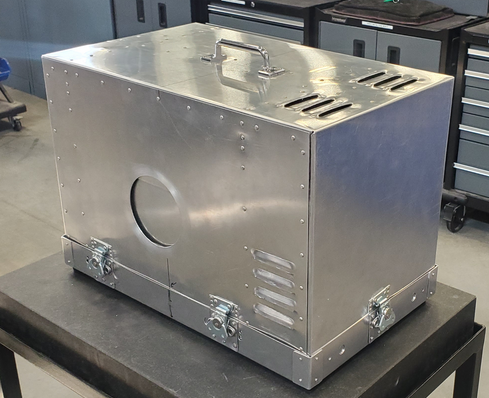
Media Coverage
Below are some links to media coverage of the Space/Gradient-Free MRI project as it develops. I also post Space/Gradient-Free MRI news on twitter from time to time.
- Interest from Brain Blast Mockup:
- Brain Blast on CTV, March 18, 2012.
- Modifed summary for Sheila Coles of CBC radio, April 2, 2012. The interview.
- Interest from my Pasadena AIAA presentation, September, 2012:
- Report in Tech News Daily on my AIAA Space 2012 presentation.
- On space.com
- On NBC
- On dvice
- DailyTech.com (a link to Today's MRI Market was on that web page.)
- Arts & Science E-Newsletter
- Space Safety Magazine
- Interest from my IAF Naples presentation, October, 2012:
- News Talk 650 CKOM interview by Trelle Burdeniuk, April 11, 2013.
- Universe Today
- Interest from my IAC 2014 Toronto talk:
- Industrial Liason Office Promotion
- Green and White alumni magazine story
- U of S story around the Sparrow, June 29, 2015.
- Saskatoon Star Pheonix Young Innovator's story, Somaie Salajeghe, 2016.
- Announcement of STDP funding, May 25, 2018.
- U of S story, May 25, 2018.
- Global News, May 28, 2018.
- CBC Radio 1, --- Radio Interview, May 30, 2018.
- CJWW -- June 4, 2018.
- CTV -- June 4, 2018. -- Video
- AMI - Accessible Media Inc. radio interview -- June 13, 2018.
- Saskatoon HOME magazine, September, 2018 issue: In a Saskatoon inventors, innovators and creators list, "Portable MRI astronaut health monitor - researcher Dr. Gordon Sarty and University of Saskatchewan student team"
- USask news item on the zero-g flights
- CREATE story on Falcon 20 flight -- June 24, 2021.
Gradient-Free MRI Publications
Journal Papers
- G.E. Sarty, A. Obenaus, "Magnetic Resonance Imaging of Astronauts on the International Space Station and into the Solar System", Canadian Aeronautics and Space Journal, 58, 60-68, 2012.
- G.E. Sarty, "Cyclic Generalized Projection MRI", Magnetic Resonance Imaging, 33, 304-311, 2015.
- S. Salajeghe, P. Babyn, J. Sharp, G.E. Sarty, "Least Squares Reconstruction of Non-Linear RF Phase Encoded MR Data", Magnetic Resonance Imaging, 34, 951-963, 2016.
- S. Salajeghe, P. Babyn, G.E. Sarty, "Composite pulses for RF phase encoded MRI: A Simulation Study", Magnetic Resonance Imaging, 36, 40-48, 2017.
- G.E. Sarty, L. Vidarsson, "Natural Slice Encoded Magnetic Resonance Imaging", Magnetic Resonance Imaging, 46, 47-55, 2018. [Has images from the original Owl MRI.]
- H. Ejalonibu, G. Sarty, M. Bradley, "Optimal parameter(s) for the synthesis of nitrogen-vacancy (NV) centres in polycrystalline diamonds at low pressure", Journal of Materials Science: Materials in Electronics, 30, 10369-10382, 2019.
- J.C. Sharp, P. Bohidar, H. Sun, G.E. Sarty. "TRASE 1D Sequence Performance in Imperfect B1 Fields", Journal of Magnetic Resonance, 305, 77-88, 2019.
- H. Ejalonibu, G. Sarty, M. Bradley, "The effect of step-wise surface nitrogen doping on the behaviour of substitutional nitrogen atoms in polycrystalline diamonds", Material Science and Engineering: B, 258, 114559 (10 pages), 2020.
- P. Bohidar, H. Sun, J.C. Sharp, G.E. Sarty, "The Effects of Coupled B1 Fields in B1 Encoded TRASE MRI - A Simulation Study", Magnetic Resonance Imaging, 74, 74-83, 2020.
- G.E. Sarty, "Natural Reconstruction Coordinates for Imperfect TRASE MRI", Linear Algebra and Its Applications, 611, 94-117, 2021.
- A.R. Purchase, L. Vidarsson, K. Wachowicz, P. Liszkowski, H. Sun, G.E. Sarty, J.C. Sharp, B. Tomanek, "A short and light, sparse dipolar Halbach magnet for MRI", IEEE Access, 9, 95294-95303, 2021.
- H.A. Ejalonibu, M. Bradley, G.E. Sarty, "Towards the design and operation of a uniformly illuminated NV detector for magnetic field mapping applications", Sensors and Actuators: A. Physical, 344, 113714 (11 pages), 2022.
- G.E. Sarty, "Concept for gradient-free MRI on twin natural slices", Magnetic Resonance Materials in Physics, Biology and Medicine, 36, 671-686, 2023.
- A. Jullienne, M. Malo, K. Shaw, Y. Zheng, J.D. Johnston, S. Kontulainen, P.D Chilibeck, E. Dadachova, A. Obenaus, G.E. Sarty, "Musculoskeletal Perturbations of Deep Space Radiation: Assessment using a Gateway MRI", Life Sciences in Space Research, 42, 74-83, 2024.
Proceedings Papers
- G.E. Sarty, J. Sharp, B. Tomanek, K. Turek, A. Obenaus, A. Scott, L. Piche, S. Kontulainen, P. Chilibeck, J. Farthing, A. Baxter-Jones, R. Pierson, "A Magnetic Resonance Imager for the International Space Station", International Astronautical Federation, 63rd International Astronautical Congress, Naples, Italy, 7 pages, October 1-5, 2012.
- G.E. Sarty, S. Kontulainen, A. Baxter-Jones, R.A. Pierson, K. Turek, A. Obenaus, B. Tomanek, J. Sharp, A. Scott, L. Piche, "Compact MRI for Astronaut Physiological Research and Medical Diagnosis", AIAA Space 2012, 12 pages, Pasadena, California, September 11-13, 2012.
- G.E. Sarty, A. Scott, K. Turek, J. Sharp, B. Tomanek, "A Wrist MRI for the International Space Station", International Astronautical Federation, 65rd International Astronautical Congress, Toronto, Canada, 7 pages, September 29 - October 3, 2014.
- K. Turek, P. Liszkowski. G.E. Sarty, "A Permanent Halbach Magnet for Wrist MRI at the International Space Station", International Astronautical Federation, 66th International Astronautical Congress, Jerusalem, Israel, October 12 - October 16, 2015.
- S. Salajeghe, P. Babyn, J.C. Sharp, G.E. Sarty, "Non-linear TRASE", 23rd ISMRM annual meeting, Toronto, Canada, p. 2461, May 30 - June 5, 2015.
- S. Salajeghe, P. Babyn, J.C. Sharp, G.E. Sarty, "Image reconstruction of RF encoded MRI signals in an inhomogeneous B0 field", World Congress on Medical Physics and Biomedical Engineering, Toronto, Canada, June 7 - 12, 2015.
- S. Salajeghe, P. Babyn, G.E. Sarty, "Composite pulses for RF phase encoded MRI", Abstract 6228, 24th ISMRM annual meeting, Singapore, May 7 - 13, 2016.
- S. Salajeghe, P. Babyn, L. Vidarsson, G.E. Sarty, "Gradient Free MRI with a rotating magnet and receiver fields", Abstract 4321, 24th ISMRM annual meeting, Singapore, May 7 - 13, 2016. [Has images from the original Sparrow MRI.]
- G.E. Sarty, L. Vidarsson, "Designing the Second Generation of Magnetic Resonance Imagers for Astronauts'', Canadian Space Summit, Winnipeg, November 14-15, 2016.
- P. Bohidar, H. Sun, G. Sarty, J. Sharp, "A Novel Approach to Investigate 1D TRASE MRI Pulse Sequence Performance in Imperfect B1 Fields", 27th ISMRM Annual Meeting, Montreal, May 11-16, 2019.
- H. Sun, A. Purchase, A. AlZubaidi, P. Bohidar, G. Sarty, B. Tomanek, J.C. Sharp, "High Resolution TRASE by Rapid Echo Encoding with Twisted Solenoid RF Phase Gradient Coils", 27th ISMRM Annual Meeting, Montreal, May 11-16, 2019.
- P. Bohidar, H. Sun, G, Sarty, J. Sharp, "A Novel Approach to Investigate 1D TRASE MRI Pulse Sequence Performance in Imperfect B1 Fields", 28th ISMRM Annual Meeting, Covid remote on-line, 2020.
- *A.R. Purchase, G.E. Sarty, L. Vidarrson, K. Wachowicz, P. Liszkowski, H. Sun, J.C. Sharp, B. Tomanek, "Design of a Permanent Magnet for MRI of the Ankle on the International Space Station", 28th ISMRM Annual Meeting, Covid remote on-line, 2020. *summa cum laude award.
- A.R. Purchase, C. Sedlock, G.E. Sarty, J.C. Sharp, B. Tomanek, "Shimming a Halbach Magnet for TRASE MRI on the International Space Station", 30th ISMRM Annual Meeting, 2022.
- *G.E. Sarty, P. Bohidar, F. Zohourparvaz, L. Vidarrson, "1.5D TRASE MRI", ISMRM 2024 2nd Workshop on Accessible MRI, Indian National Science Academy (INSA), New Delhi, India, 16-18 February 2024. *2nd place proffered papers.
Technical Reports
- G.E. Sarty, "Nuclear Magnetic Resonance Technology for use on the International Space Station - Conceptual Design", to generate industrial interest, 45 pages, October 2, 2009.
- G.E. Sarty, "Road-Map for the Construction of a Space MRI and the Next-Generation TRASE MRI", for Com Dev and CSA grant application, 13 pages, June 23, 2011.
- G.E. Sarty, "Construction of the Technology Demonstration Model for the Next-Generation TRASE MRI and the Space MRI at the University of Saskatchewan: Preliminary Plans", for various partners, 6 pages, August 12, 2011.
- G.E. Sarty, "Compact MRI - Concept and Planning Summary", for internal use by Compact MRI partners, 239 pages, February 10, 2012.
- G.E. Sarty, "Compact MRI for Astronaut Physiological Research and Medical Diagnosis", Canadian Space Agency Request for Information, 5 pages, March 8, 2013.
- A. Obenaus, G.E. Sarty, "The Importance of Human Space Flight to the Development of Medical Imaging", white paper for NASA's Committee on Human Spaceflight, 6 pages, July 6, 2013.
- G.E. Sarty, A. Scott, L. Piche, A. McColgan, C. Earnshaw, K. Turek, P. Liszkowski, B. Tomanek, J. Sharp, R. Tyson, K. Lo, V. Volotovskyy, D. Yin, "Life Science Research System on the ISS, Wrist Magnetic Resonance Imager: ISS-MRI, Study Phase Final Technical Report", CSA contract deliverable, 159 pages, June 4, 2014.
- G.E. Sarty, L. Vidarsson, "Business Plan for Pelican MRI", for Tech Venture Challenge, 28 pages, May 2, 2016.
- G.E. Sarty, "Magnetic resonance imaging for space life science research", Response to Canadian Space Agency STDP Letter of Interest, 2 pages, February 27, 2017.
- G.E. Sarty, S. Kontulainen, A. AlZubaidi, L. Vidarsson, G. Warner, L. Piche, A. Scott, M. Mocanita, P. Cameron, K. Smith, T. Spagnuolo, K. Turek, P. Liszkowski, J. Sharp, "PT11 - Magnetic Resonance Imaging Instrument for Ankles - Final Technical Report", 366 pages, January 17, 2019.
- G.E. Sarty, J. Loehr, S. Duchesne, J. Dunn, Y. Yucel, "TCS 1: Medical Diagnostic Tools for Deep Space Missions - Spacecraft Medical Imaging System", 102 pages, September 13, 2019.
- G.E. Sarty, S. Duchesne, L. Vidarsson, B. Tomanek, J. Sharp. Artemis Lander Magnetic Resonance Imager, MILO Academy PDR Document, 199 pages, 2022.
- G.E.Sarty, M. Smith, A. Norris, T. Achtzehn, R. Ward, D. Locklin, A. Shinn, L. Vidarsson, S. Duchesne, S. Kontulainen, P. Chilibeck, J. Johnston, E. Dadachova, K. Shaw, Y. Zheng, A. Obenaus, A. Jullienne-Wislofsky, "MRI for Deep Space Radiation Human Health Research – Concept Study Report", CSA Report, 182 pages, 2024.
Funding
- G.E. Sarty, "Planning and conceptual design of a magnetic resonance imager for the international space station", NSERC Interaction Grant, 2011, $2400.00. Completed.
- G.E. Sarty, "Design and Testing of Gradient Free Magnetic Resonance Imaging", NSERC Discovery Grant, 2012-2017, $90,000. Completed.
- G.E. Sarty, Principal Investigator, "Wrist Magnetic Resonance Imager: ISS-MRI", Life Science Research System on the ISS, Study Phase, December 4, 2013 - June 4, 2014, $240,000.00 to COM DEV prime, with sub to U of S, with sub to MRI-TECH. Completed.
- G.E. Sarty, "Development of Portable, Gradient Free MRI", Department head research support program, U of S, 2015. $5000. Completed.
- G.E. Sarty, Principal Investigator, "PT11 - MRI Instrument for Ankles", Canadian Space Agency, STDP contract, 2017-2019, $100,000. Completed.
- G.E. Sarty, J. Loehr, J. Dunn, Y. Yucel, S. Duchesne, "TCS 1: Medical Diagnostic Tools for Deep Space Missions - Spacecraft Medical Imaging System", Canadian Space Agency, STDP contract, 2019, $100,000.
- G.E. Sarty, Principal Investigator, "Suborbital Development and Testing of a Space Flight Astronaut Magnetic Resonance Imager", Canadian Space Agency, FAST Grant, 2017-2019, $500,000. Completed.
- G.E. Sarty, "Design and Testing of Gradient Free Magnetic Resonance Imaging", NSERC Discovery Grant, 2017-2023, $126,000. Completed..
- G.E. Sarty (P.I., Pelican MRI, Inc.), S. Duchesne, L. Vidarsson, B. Tomanek, J. Sharp, "Ultralight MRI for Remote and Isolated Communities", Deep Space Healthcare Challenge, Canadian Space Agency, 2022, $30,000. Completed.
- G.E. Sarty (P.I., Pelican MRI, Inc.), L. Vidarsson, M. Smith, A. Norris, D. Locklin, A. Shinn, S. Duchesne, A. Obenaus, K. Dadachova, S. Kontulainen, P. Chilibeck, J.D. Johnston, "Wrist Magnetic Resonance Imager for the Lunar Gateway", Gateway Utilization Science and Technology Initiative, Canadian Space Agency, 2023, $242,500. Completed.
- G.E. Sarty and M. Pollard. "A Project Based Elective Credit Program at the SIIT: Building Compact MRI Prototypes", SK-NEIHR Community Partnership (CP) grant to SIIT, 2023, $10,000. CActive.
- G.E. Sarty, "Design and Testing of Gradient Free Magnetic Resonance Imaging", NSERC Discovery Grant, 2014-2029, $170,000. Active.
- G.E. Sarty, V. McKinney, S. Lovo, J. Leader, S. Wiebe, S. Adams, S. Rayan. "Finding a Needs-Based Niche for Specialized Compact MRIs in Northern Saskatchewan’s First Nation and Métis Communities", SK-NEIHR Community Partnership (CP), 2023, $10,000. Active.
*The Space MRI Lab Logo was designed by Millie Jamieson.

